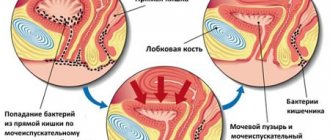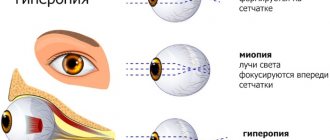Oliguria is a symptom of certain diseases. This means that not enough fluid is removed from the body. But there is no need to panic right away. Perhaps you are in too hot conditions (the liquid has already come out through sweat) or you haven’t drunk enough water today, but if you have systematic problems with urination and discomfort after it, you should contact a specialist who, after an examination, will tell you how to treat it.
Typically, an adult excretes 1 to 2 liters of fluid in urine per day. But this is influenced by quite a few factors, such as: gender, age, level of physical activity, amount of fluid consumed. The most dangerous stage of the symptom is anuria. In this case, only 100 ml of urine is excreted from the body per day or not at all.
Reasons for the development of oliguria
Oliguria is not a disease, but a symptom of a certain pathology. The reduction in the amount of urine excreted by the kidneys can have physiological and pathological causes. Competent specialists must understand the etiology. Physiological oliguria occurs with a sharp decrease in drinking regimen, use of certain medications, loss of fluid during intense physical activity and hot weather.
Pathological reduction in the amount of urine most often occurs for the following reasons:
- acute and chronic diseases of the kidneys and other urinary organs;
- the appearance of edema due to fluid retention;
- blockage of the renal veins;
- prolonged diarrhea, vomiting;
- bleeding;
- the appearance of blood and other impurities in the urine;
- hemolytic syndrome;
- cardiovascular pathologies;
- burn disease;
- endocrine disorders (urine excretion decreases in diabetes mellitus).
It is necessary to distinguish from oliguria urinary disorders that occur in women and men with prostate adenoma and kinks in the ureter. These disorders are characterized by anuria. Differential diagnosis must be carried out if the volume of urine is reduced and specialists find it difficult to make an accurate diagnosis. In order to select effective treatment, it is necessary to conduct a comprehensive examination.
Oliguria: symptoms
A sign of oliguria in women, men and children of any age is a small volume of urine excreted. For an adult, the norm is one and a half to two liters per day.
There is also such a diagnosis as polyuria. Polyuria is an excessively large volume of urine excreted per day. The condition requires seeing a doctor. For a woman, the norm for a day when drinking about two or two and a half liters of liquid is one and a half liters of urine. For men, the norm is higher and amounts to two liters of urine per day. Oliguria is defined as passing less than one and a half liters of urine per day. For children, the level of urine excreted per day should not fall below a liter, and excretion of less than 400 milliliters is considered pathological. For infants, it is determined by the formula: 0.5 milliliters per kilogram of weight. For newborns, the first three days are considered days of adaptation to work independently and independent of the mother’s body, and therefore a diagnosis cannot be made during these days.
Symptoms of oliguria may include pain in the lower abdomen - in the area of the bladder, groin, burning sensation when urinating.
Diagnostic features
An integrated approach to examination when urine production is reduced allows you to make an accurate diagnosis in a short time and decide on further medical tactics.
For oliguria, the following diagnostic procedures may be prescribed:
- laboratory diagnostics of blood, urine;
- ultrasound examinations;
- kidney biopsy;
- immunological blood tests;
- fundus examination;
- ECG;
- excretory urography;
- pyelography;
- MRI of the urinary organs;
- hormonal diagnostics.
The examination can be supplemented with other methods, depending on the clinical manifestations of the disease, the patient’s age and the presence of chronic pathologies. With oliguria, characteristic changes occur in blood and urine tests. Specialists detect proteinuria, cylindruria, hematuria, and decreased renal filtration function. Using ultrasound, you can determine the size of organs, changes in renal echogenicity, and glomerular filtration rate.
A kidney biopsy is prescribed if differential diagnosis is necessary, when the disease progresses rapidly and is accompanied by a high risk of complications. An increase in pressure against the background of a decrease in urine production requires an ECG, as well as an examination of the fundus.
Polyuria, anuria, oliguria
Problems with the production and excretion of urine can be of various types. There are other forms of diuresis disturbance, in addition to such a malfunction as oliguria. Anuria is a pathology in which the flow of urine into the bladder is stopped. It is important not to confuse anuria with acute urine retention, when it enters the bladder but is not removed from there. Another disorder is polyuria, in which, on the contrary, a lot of urine is produced. An increase in urine formation may be associated with diseases of the kidneys themselves, with hormonal and other disorders of the body. Polyuria, oliguria, and anuria require treatment, which is based, first of all, on eliminating the root cause.
Normal amount of urine per day
The rate of diuresis per day depends on age and gender. Newborns produce up to 60 ml of urine per day. In children under 5 years of age, the daily urine norm is 600–900 ml. Teenagers produce 1–1.5 liters of urine per day. The norm of diuresis for adults is 1–2 liters per day. The average norm for women is 1200–1600 liters of urine.
The amount of matcha released directly depends on the characteristics of the drinking regime, a person’s physical activity and temperature conditions. These factors must be taken into account when diagnosing oliguria. To determine the size of urine excreted, it is necessary to collect urine during the day in a separate container.
Home remedies for treatment
There are several natural and safe remedies for the treatment of oliguria, the risk of side effects from their use is minimal. Some of the folk recipes are very popular and have long been used to normalize diuresis. For example, juniper berries are very useful, they help remove toxins from the body and also stimulate the kidneys and pancreas.
A mixture of chopped cilantro and buttermilk (a low-fat byproduct of butter making) is very effective. Drink this drink with every meal. Anemarrhena leaves and roots are very useful in the treatment of oliguria. All you need to do is pour 300 ml of boiling water over a tablespoon of the dried mixture of this plant and let it brew for a couple of hours. To improve your condition, drink two glasses of this infusion daily until diuresis returns to normal.
Plantain seeds and gentian root are considered very effective in treating the disease. Taking a decoction of these herbal remedies promotes urine formation and also reduces swelling of the prostate gland. Many healers advise drinking so-called copper water. Pour clean water into a copper container overnight, and the next day drink this water with copper ions. You can increase urine flow by using cardamom powder diluted in warm milk. You should drink this drink every day until you get results.
So, we have considered such issues as oliguria, symptoms, treatment of the disease. If any manifestations of the disease occur, consult a doctor immediately. In addition, it is recommended to avoid fatty and salty foods, eat a balanced diet, including as many fresh vegetables and fruits as possible in your diet. Urinate as soon as you feel the urge to urinate. Drink more water to protect your body from dehydration.
Additional signs
Clinical manifestations of oliguria depend on the underlying disease. If the volume of urine is reduced due to prolonged diarrhea and vomiting, additional signs appear:
- pain in the abdomen and stomach;
- increased body temperature;
- blood, pus in feces, vomit;
- decreased performance;
- pallor, dry skin;
- abdominal cramps;
- dry mouth, thirst;
- general malaise.
These signs are more common with intestinal infections, digestive disorders, chronic or acute diseases of the digestive tract. With prolonged diarrhea and vomiting, a decrease in hemoglobin occurs, and dizziness, severe weakness, and headache may occur.
Intestinal infections are especially dangerous in childhood. Due to vomiting and diarrhea, the risk of developing multiple organ failure, dehydration, and disruption of the heart and blood vessels increases sharply. Persistent vomiting sometimes leads to esophageal rupture, aspiration and suffocation in children.
Treatment of the disease
Oliguria is a disease whose effective treatment involves three successive stages:
- elimination of the pathological cause, the underlying disease;
- restoration of homeostasis of the body;
- treatment of complications.
Therapy for a disease always depends on the cause that caused it, and in most cases, diuresis can be restored and the body’s condition normalized. One of the treatment methods today is to insert a catheter into the urethra in order to eliminate its obstruction and remove the accumulation of urine. If there is a risk of kidney failure, then an artificial filter is used instead of a kidney, which allows the normal removal of waste products from the blood to be restored.
In some cases, hospitalization is necessary; in the hospital, the patient is given intravenous fluid if dehydration is observed. It is also recommended to stop taking any medications that may be toxic to the kidneys. It is important to restore normal renal perfusion; this requires correction of arterial hypotension and vasodilatory drug therapy.
Reducing the amount of urine: list of diseases
The following pathologies lead to a reduction in urine production:
- glomerulonephritis;
- infections, diseases of the digestive system;
- pyelonephritis;
- acute renal failure;
- hemolytic syndrome;
- renal vein embolism;
- renal colic;
- neoplasms of the urinary organs;
- urolithiasis disease;
- vasculitis
Oliguria can develop against the background of vomiting and diarrhea with the following diseases of the digestive tract:
- gastritis;
- duodenitis;
- peritonitis;
- pancreatitis;
- biliary colic;
- cholecystitis;
- peptic ulcer;
- food or drug poisoning.
Consider the fact that oliguria occurs in endocrine diseases and pathologies of the cardiovascular system. In any case, a reduction in urinary output or complete urinary retention should alert you and force you to consult a specialist. Even if you are not bothered by lower back pain, there is no blood, pus or unpleasant odor from urine and you feel satisfactory - make an appointment with a therapist or urologist. The doctor will understand the situation and find out why urine is not excreted as usual.
At an early stage, many diseases are easier to treat and do not lead to the development of complications. Never prescribe treatment for yourself. This should be done by a doctor familiar with the results of a comprehensive examination. Some people, faced with oliguria, try to correct the situation with diuretics. But treatment should be aimed not only at the symptoms of the disease, but also at the causes of its occurrence. Only in this case can the expected result be achieved.
Causes
Also considered to be false oliguria are the consequences of diseases such as Barter syndrome, hypokalemia, and Cohn syndrome. Such problems are usually accompanied by a sharp reduction in urine volume, but subsequently normalize on their own.
Perirenal or functional causes
This group includes any sudden loss of fluid in the body, such as:
- Decreased blood pressure: blood loss (surgery, injury), cardiac system disorders (arrhythmia, myocardial infarction), infections (sepsis, peritonitis);
- A decrease in the amount of circulating blood and shock states of the body: vomiting, acute eczema, burns, wet dermatitis, lack of adrenaline, aldosterone, and others.
Renal (pathological) causes
In this case, oliguria indicates the presence of kidney damage and the possible presence of diseases such as:
- Tubulointerstitial nephritis;
- Renal vascular diseases (renal vascular atherosclerosis and others);
- Diseases of the glomeruli of the kidneys (glomerulonephritis and others);
- Poisoning with nephrotoxic (harmful to the kidneys) substances.
The occurrence of oliguria can also become a symptom of urinary tract obstruction and the following diseases:
- Obstruction of the urinary tract (tumor, urolithiasis, etc.);
- Narrowing of the urethra (tumor, cyst);
- Birth injuries (hematomas and other injuries);
- Prostate adenoma (in men).
Acute glomerulonephritis as the main cause of oliguria
The acute form of glomerulonephritis most often leads to oliguria. This disease is immunoinflammatory in nature. With glomerulonephritis, the glomerular apparatus of the kidneys is predominantly affected. Men get sick many times more often than women. Exacerbation of glomerulonephritis occurs during the cold season, when streptococcal and viral infections are common.
The development of glomerulonephritis is often preceded by the following diseases:
- ENT pathologies: tonsillitis, pharyngitis, sinusitis, otitis;
- scarlet fever;
- erysipelas;
- chicken pox;
- parotitis;
- herpes;
- viral hepatitis;
- Infectious mononucleosis;
- diphtheria;
- pneumonia.
Less commonly, acute glomerulonephritis progresses against the background of sudden allergic reactions, intolerance to vaccines, certain medications, and due to alcohol intoxication. Hypothermia, a strong decrease in immunity, and toxic effects from the outside contribute to the development of the disease.
Signs of acute glomerulonephritis usually appear 1–2 weeks after exposure to an etiological factor (infectious disease, toxic damage, allergy). Urinary syndrome with the development of oliguria is combined with severe thirst, the appearance of red blood cells and protein in the urine. Anuria may appear several days after the development or exacerbation of a chronic disease. In the absence of adequate medical care, cerebral disorders (cerebral edema), severe arterial hypertension, hydrothorax, bradycardia, and nephrotic syndrome develop.
Acute glomerulonephritis is accompanied by arterial hypertension, which is often combined with bradycardia. Against the background of cerebral disorders, severe headaches, vomiting and nausea appear, hearing and vision decrease. In this condition, the patient needs urgent medical attention. Otherwise, eclampsia develops, which is characterized by convulsions, swelling of the veins in the neck, loss of consciousness and cardiovascular disorders.
Lower back pain occurs due to overstretching of the renal capsules. Against the background of urinary syndrome, severe dry mouth appears, swelling occurs in the face and lower extremities. With further progression of the edematous syndrome, the risk of anasarca, hydrothorax and active weight gain increases due to the accumulation of fluid in the tissues.
Oliguria in chronic glomerulonephritis occurs only in the last stages of development and during exacerbation. In case of swelling, specialists prescribe diuretics, which can cause polyuria to temporarily progress. Developing gradually, without obvious urinary syndrome, chronic glomerulonephritis leads to renal failure and death of the patient.
Diagnostics
For the disease “oliguria,” treatment is prescribed after diagnosis and identification of the exact causes of the pathology. The doctor examines the patient, studies his medical history, and conducts a conversation in which important information is the volume of fluid consumed per day, the amount and color of urine excreted. Particular attention is paid to the presence of any aggravating factors and accompanying symptoms - fever, nausea, diarrhea, vomiting, increased thirst, recent injuries, medications, allergies.
Diagnostic tests are also needed to confirm the causes of oliguria. The doctor orders a urine test to check for inflammation or infection in the kidneys. X-ray examination with the introduction of a contrast agent helps to identify kidney stones and tumors, and ultrasound diagnostics are necessary to check for cysts.
Other diagnostic procedures include computed tomography of the abdomen and pelvis, and cytoscopy, in which a flexible telescope is inserted into the urethra. Blood tests show the presence of anemia, kidney failure and possible urinary tract infections.
Treatment of oliguria
The main goals of treatment for oliguria:
- combating the symptoms of the underlying disease;
- impact on the causes of the disease;
- prevention of complications;
- reducing the number of relapses;
- restoration of impaired functions and normal kidney function.
Treatment of oliguria is prescribed in accordance with the diagnosis. If glomerulonephritis and other kidney pathologies are detected, the patient may be hospitalized in the urology department. It is recommended to adhere to bed rest and certain dietary restrictions. Specialists monitor the amount of fluid consumed and urine output. Dietary restrictions concern animal proteins, salt, seasonings, spices, spicy foods, and liquids. For severe edema, diuretics and drugs that normalize blood pressure are prescribed. In acute glomerulonephritis, steroid hormones are prescribed for 5–6 weeks. If renal failure develops, specialists administer anticoagulants and perform hemodialysis.
When infectious diseases are detected, antiviral therapy is prescribed, which allows you to destroy viruses and reduce the clinical manifestations of the underlying pathology. Staphylococcal infection is an indication for antibiotics. Anti-inflammatory drugs are also used and symptomatic therapy is carried out. To relieve pain, analgesics are prescribed, and to reduce temperature, anti-hyperthermia drugs are prescribed in the form of tablets, powders, syrup (for children).
In case of food poisoning, vomiting and diarrhea, the drinking regime is strictly controlled, antidotes and agents are administered to normalize the water-electrolyte balance. It is recommended to limit spicy and salty foods even after complete recovery, so as not to provoke a relapse. Avoid foods that irritate the digestive tract and kidneys. Canned food, alcohol in any form, strong coffee, fatty meats, smoked foods and spicy foods are removed from the diet. During an exacerbation, it is recommended to limit protein foods; in case of edema, reduce the amount of fluid.
Principles of treatment
With pathological oliguria, treatment is directly related to the disease that causes it. Taking medications without a doctor's prescription is not recommended. The treatment plan is drawn up based on the results of examinations based on the established diagnosis:
- If oliguria is caused by an infectious-inflammatory disease (cystitis, urethritis, pyelonephritis), antibiotics, diuretics (diuretics), anti-inflammatory drugs, and herbal infusions are used.
- For acute and chronic glomerulonephritis, complex therapy is necessary. It includes antibacterial drugs, glucocorticosteroids, anticoagulants, diuretics, diet (table No. 7 or 7a).
- If the ureter is blocked, abdominal surgery is necessary to remove it.
- If the urethra is plugged with a blood clot, inserting a catheter will push it into the bladder. Then, through the catheter, the bladder is rinsed with saline or 1% silver nitrate solution to dissolve blood clots.
- When the urethra is obliterated by a stone, it is removed with special forceps, and if the stone is too deep, it is pushed into the bladder. Then lithotripsy is used (contact or remote crushing of stones using ultrasonic shock waves).
Unlike surgical removal of stones from the kidneys and bladder, lithotripsy is a low-traumatic method - Traumatic injuries to the urinary organs require surgical intervention.
- Tumors that interfere with the flow of urine are excised.
- Fistulas and perforations of the bladder wall are sutured, and in advanced cases, the bladder is removed to form an artificial intestinal reservoir for urine.
False physiological and psychogenic oliguria are eliminated by normalizing the drinking regime and rationalizing physical activity.
Why does oliguria occur?
The most common causes of oliguria are hidden in:
- kidney damage;
- general circulatory disorders;
- damage to urinary structures;
- impaired nervous and hormonal regulation.
They are conventionally divided into:
- renal (renal) - associated with pathological changes and kidney diseases, characteristic of acute glomerulonephritis, nephrotic syndrome, chronic nephritis, polycystic disease, nephrosclerosis;
- extrarenal - caused by other disorders (circulatory system, significant dehydration, liver damage, neuroendocrine diseases);
- postrenal - arise due to obstructed outflow caused by an enlarged prostate gland, a stone in the pelvis or ureter, a tumor, accumulated blood (hematoma).
At high temperatures, the doctor recommends drinking more, this reduces dehydration and intoxication
Oliguria is an important sign of acute and chronic renal failure. Let's look at the most common reasons.
Common infectious diseases that occur with high intoxication, fever, are accompanied by loss of fluid with profuse sweat, vomiting, and diarrhea. Children are very sensitive to diarrhea. Therefore, any enterocolitis threatens the baby’s body with dehydration.
The most significant infectious disease is cholera. The patient loses fluid with incessant diarrhea and frequent vomiting. If the water-electrolyte composition is not compensated with treatment, then oliguria will be followed within a few hours by complete anuria with kidney block.
In acute glomerulonephritis, inflammation affects small capillaries in the glomeruli. Autoimmune formations block the filtration of primary urine, and swelling of the medulla compresses the tubules. Therefore, both main mechanisms ensuring water balance are disrupted.
Acute pyelonephritis is caused by infection of the pelvis and calyces. In severe cases, it spreads to the tubules and glomeruli, causing inflammation and swelling. Compression of the kidney parenchyma can cause significant stagnation of urine in the pelvis. The process is caused by a mechanical obstruction along the outflow tract (stone, tumor, congenital narrowing of the ureters).
The affected kidney increases in size to the point of hydronephrosis. Urine excretion is compensated for some time by a second healthy organ. But in the absence of surgical intervention, oliguria occurs first, then anuria.
Heart failure in decompensated myocardial diseases (acute infarction, malformations, myocardial dystrophy, cardiomyopathy, hypertension and others) helps to reduce renal filtration, since it reduces cardiac output, the amount of blood passing through the renal membrane.
Heart failure is one of the causes of oliguria
Thromboembolism in the renal artery or compression of a similar vein sharply disrupts local blood flow, causing ischemia of the kidney tissue up to necrosis of individual structures. Oliguria is an obligatory component of the disease manifestation.
In the practice of doctors, oliguria is observed after surgical treatment, large blood loss, or the administration of a high dose of diuretics, as a reaction to the drug Methotrexate.
What forms of quantitative urinary disorders are observed in pathology?
In addition to oliguria, the symptoms of diseases of the urinary system are usually distinguished:
- anuria - daily diuresis is reduced to 50 ml or less, urine does not flow from the kidneys into the bladder, even with the insertion of a catheter, the absence of residual urine is detected (in contrast to acute retention with difficult exit);
- polyuria - much more urine is produced than fluid consumed (more than 2 liters per day), a symptom indicating kidney disease and hormonal disorders.
Pathological conditions are often accompanied by alternating signs of polyuria, oliguria and anuria. They may indicate the stage of damage to the renal mechanisms.
How much urine should be excreted per day?
Prerenal anuria can be observed:
- in a severe state of shock;
- with hypotension of cardiac origin;
- with renal artery thrombosis;
- acute massive blood loss.
Renal anuria is most often a dangerous symptom of poisoning (ethylene glycol, heavy metal salts, low-quality alcohol, acetic acid). Other reasons may be:
- tubular necrosis during renal ischemia;
- disruption of tubular patency by uric acid salts and drugs of the sulfonamide group;
- acute and chronic nephritis.
The postrenal type is always associated with obstructed outflow through the urinary tract, its blockage, and compression.
Necrosis of the renal tubular epithelium
Polyuria is characterized not only by increased urine output, but also by its highly diluted composition with low specific gravity. Often accompanied by an abnormal feeling of thirst and heavy drinking (polydipsia). With polyuria, the regulation of reabsorption of water in the tubules (reabsorption) is disrupted.
The symptom may be of renal origin - with damage to the tubular apparatus (tubulopathies), and is the initial stage of chronic renal failure caused by kidney pathology. It is also observed during the recovery period in acute renal failure.
Extrarenal causes of polyuria are neuroendocrine disturbances in the regulation of water and electrolyte balance. It can develop with Itsenko-Cushing syndrome, diabetes mellitus, hyperfunction of the thyroid gland, acromegaly.
As a compensatory reaction, polyuria accompanies:
- consequences of hypertensive crisis;
- attacks of paroxysmal tachycardia;
- therapy of heart failure when removing fluid from edematous tissue.












